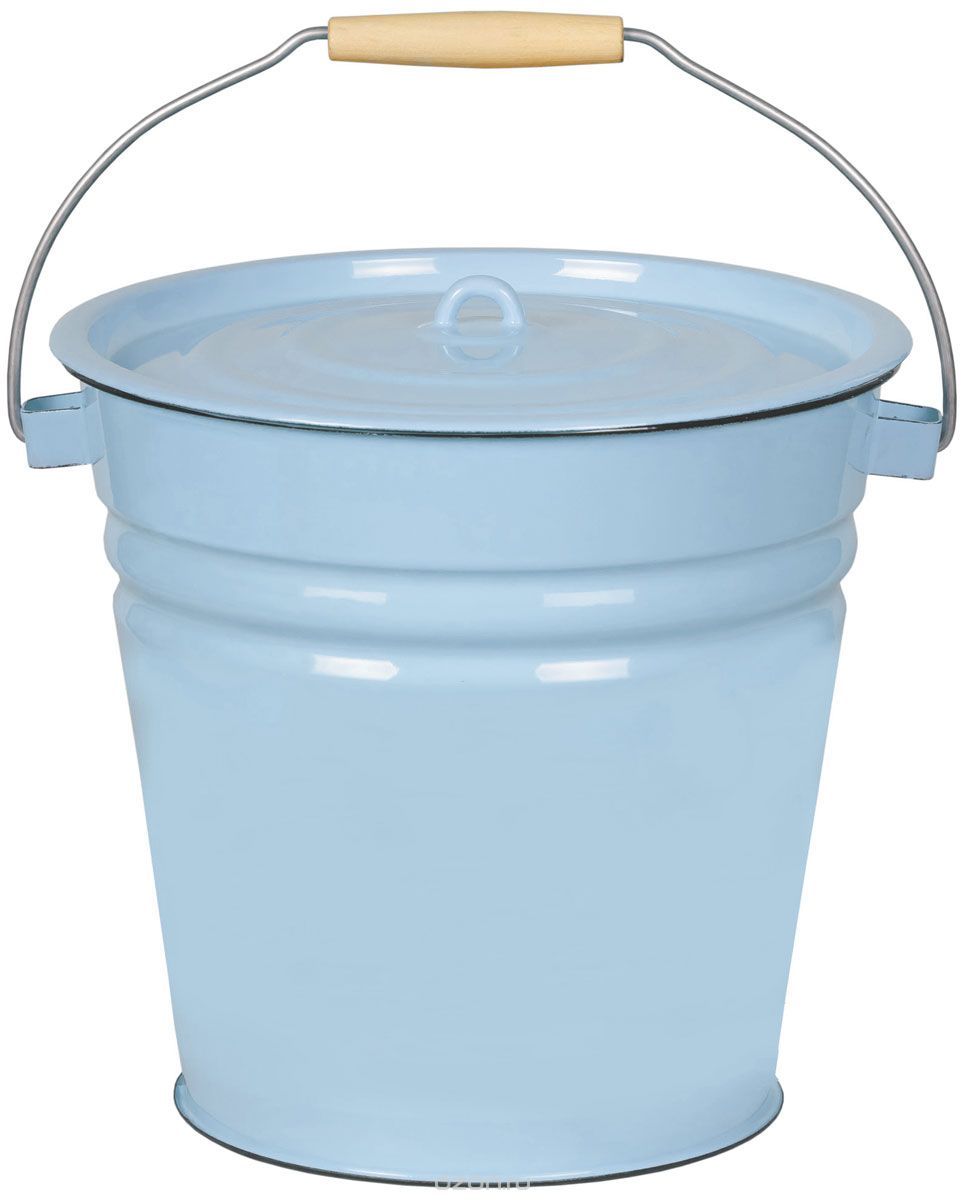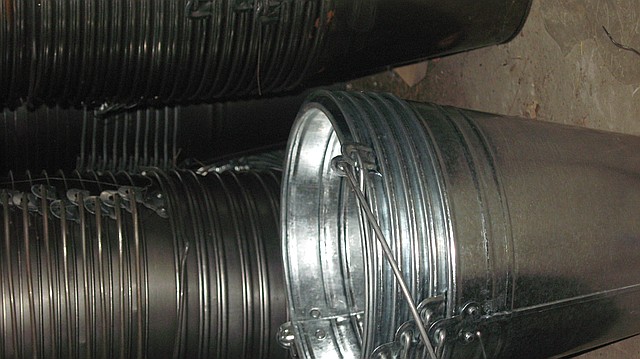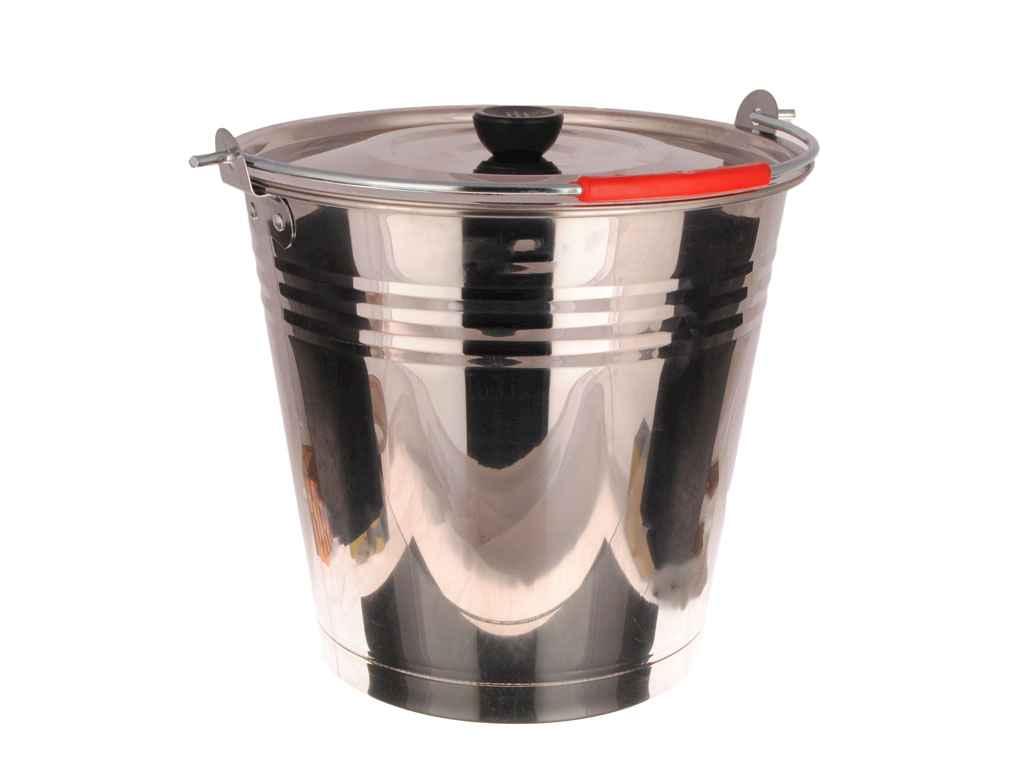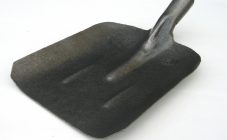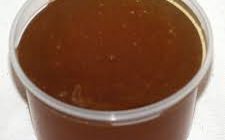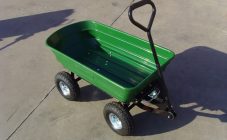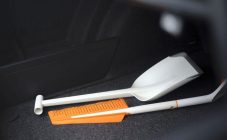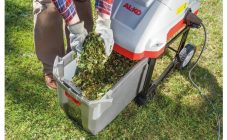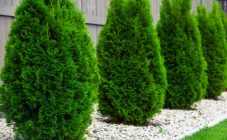Metal buckets replaced wooden buckets in the life of the Russian people already at the turn of the 19th and 20th centuries. Until this period, they were not available to ordinary people, since they were expensive. With the development of the metallurgical industry, they supplanted the wooden predecessor and securely took their positions in every person's house. Despite the fact that now there are plastic buckets, the metal bucket has not disappeared from circulation. Moreover, many people prefer a simple galvanized bucket to any curly or folding plastic bucket.
Rumors about the dangers of plastic dishes, sometimes not unfounded, do their job. An iron bucket is safer and more reliable, this is the opinion of a villager. Indeed, in the village to this day they get drinking water from the well. It is very difficult to do this with a plastic bucket. The scope of the steel bucket is immense: it is both a construction site for bulk materials and for concrete mortar, and in agriculture it is needed everywhere. It is used as a measure in the trade in grain and other agricultural products. They get water from natural reservoirs, heat water for household needs. So it is irreplaceable for now.
Tin buckets
Almost all metal buckets are made of tin. Therefore, it will be advisable to get acquainted with the process of producing tin, and then with the line for making buckets from this material. A 10 l metal bucket is the most popular product, so the close attention of enterprising people is riveted to it.
Tin is cold-rolled sheet steel, which, after rolling, undergoes additional processing, depending on what it is intended for:
- Most often this is the process of tinning - covering the sheet with a layer of tin. The material becomes marketable and is called tinplate. Tin tin is hot and cold. In the first case, the thickness of the tin coating is in the range from 1.6 to 2.5 microns. After cold, i.e. electrolytic tin deposition, the coating thickness varies from 0.34 to 1.56 μm. Plating with tin is an expensive process, so other methods of plating black sheet are increasingly used.
- The tin can also be coated with varnish, which is mainly used for making cans. A layer of varnish makes the tin plate neutral, so that canned food does not react with metal. Lacquered tin is also used in mechanical engineering.
- The zinc coating of the sheet makes it more durable and anti-corrosion. Galvanized sheet is used in many areas of human life. These are household items - buckets, basins, baths, tanks; various pipes for chimneys and hoods, as well as tin roofing.
- Chromium-plated sheet is obtained by electrolytic deposition with chromic anhydride. The area of application of chrome tin is quite numerous: in mechanical engineering, as a canning container, for creating various household items, including containers for serving chilled wines and champagne on the table.
- The tin is plated with nickel, and then it is called stainless steel. Stainless steel buckets are arguably the most expensive. Therefore, against the background of more democratic options, they are considered as a kind of luxury.
Enamel bucket with lid
Enameled buckets are an indispensable item in the household:
- they can hold water;
- collect and transport berries without fear of oxidation;
- they are suitable for milk, sour cream, cottage cheese in those farms where they are engaged in animal husbandry;
- in them you can ferment cabbage, pickle cucumbers, mushrooms and other pickles.
What are the benefits of enameled containers:
- thanks to the enamel coating, they do not corrode and do not react with aggressive fillers;
- enameled containers look very attractive. Manufacturers produce them in a wide range of colors. In addition, they are often decorated with printed designs, which is pleasing to the eye;
- as a rule, they are equipped with lids and trays, which allows you to boil water, linen in them and even prepare first courses in large volumes when necessary;
- the handle of the enameled containers is doubled with a plastic sheath, which is very convenient. When heavy filler is carried in the bucket, the handle does not cut into the hands;
- enameled containers with a lid are most often produced in a standard size - 10-12 liters;
- in general, the shape of the enameled buckets is not very diverse: cylindrical and truncated cone.
They are very easy to use, wash well, do not absorb foreign odors. Usually they are made of high-quality sheet metal with a thickness of 0.8 to 2.0 mm with a double enamel coating, which is carried out, according to technical characteristics, in two ways:
- Wet, or slip method, in which the enamel is applied to the walls of the container using a spray gun or when the object is completely immersed in liquid enamel. Then the item is dried in the oven and the procedure is repeated.
- Dry method, in which enamel powder is applied to the walls of a red-hot product. After that, the object is fired, a second layer of powder is applied and fired again.
Galvanized
These buckets are an irreplaceable household tool. They serve:
- for the storage of bulk building materials and non-food products;
- they can carry water, but it is not recommended to leave it for a long time in a galvanized bucket. But due to their high resistance to aggressive environments, it is possible to dilute solutions of household chemicals in them when cleaning premises;
- they are widely used in construction work for storing and carrying construction materials, mortars, mixtures, etc .;
- in agriculture, they are needed for domestic work, for storing fodder for livestock and poultry.
Manufacturers produce 15 L, 12 L, 9 L, 7 L and 5 L galvanized buckets. There is also a 12-liter zinc bucket with a spout for use as a milk pan on farms. It is made from galvanized sheet on special modern equipment, due to which:
- buckets have only one seam, treated with a special sealing paste before stitching, which makes it airtight;
- handles are made of special reinforced wire;
- Strong steel rivets are used to attach the handles, which makes the bucket reliable when carrying heavy loads.
It will be useful to know how and why the zinc coating is made, which gives the buckets not only a presentation. A layer of zinc is applied to protect the metal from corrosion. The principle of operation here is this: some metals - tin, zinc, copper, oxidizing in air, form a protective film on the surface, which closes the access of air to the bulk of the metal, thereby keeping it from rust. Galvanizing methods are as follows:
- Galvanic. Galvanizing occurs due to the deposition of zinc on the metal surface in the process of passing current through a zinc-containing electrolyte.
- Using a supersonic flow of zinc powder onto the metal surface. With this method, the highest adhesion of the metal and coating.
- Diffuse galvanizing - processing in zinc powder at temperatures from 300 to 450 ° С or processing in zinc vapor at temperatures from 850 to 950 ° С.
Stainless steel containers
A stainless steel bucket is not a must-have for the average family. Rather, on the contrary, it is a fairly rare occurrence in an ordinary household. And the point here is not the high cost of the product, it may be slightly higher than the price of an enameled container of the same volume. It's just that they use enameled or galvanized buckets more in everyday life. The reasons are as follows:
- A stainless steel bucket is, in fact, made of chrome-plated sheet metal, usually very thin. It is not credible and seems unreliable. It would never occur to anyone to ferment cabbage in it, and rightly so, because most often it is made from non-food steel. And the chrome coating is not sufficiently reliable protection against chemical reactions in aggressive environments - brines, starter cultures, etc.
- The gray color and steel sheen makes this container unattractive for food. The most that can be done is to bring water in it. Whether it is possible to leave water in it for settling is a moot point, but it is better not to risk it.
- For rural areas, buying such a bucket is not advisable, because there the bucket performs a bunch of functions at the same time. It is not suitable for a well, since it is too light.
This is where stainless steel containers took the leading positions:
- Garbage container in the kitchen and toilet. They look presentable. Easy to clean. Here their metallic luster is not a hindrance, but rather an undeniable advantage. The volumes of these buckets vary between 5, 7, 10 and 12 liters. These buckets are equipped with hinged lids with special pedals.
- The stainless steel thermos bucket is also in great demand. For lovers of out-of-town outings, fishermen, truck drivers, this is an indispensable attribute that allows you to keep food hot for a long time.
- The usual shape of stainless steel buckets with and without lids are presented by manufacturers in the following volumes: 3, 5, 7, 10, 12 and 15 liters. You can buy them at any store.
- A small chrome steel bucket is good for serving crushed ice or chilled drinks. It looks great.
Aluminum
From the middle of the 20th century. and to the present time, aluminum dishes, including buckets, have reliably won their positions in the world market, despite the fact that serious wars were waged against aluminum dishes. Aluminum was accused of being highly toxic. Although it, like chromium, copper and tin, reacts with oxygen, it covers the dishes with a protective film. The older the aluminum cookware, the more reliable the protective layer, especially if you do not rub it with abrasive products.
In general, aluminum cookware is lightweight, durable and looks aesthetically pleasing. Why buy aluminum buckets:
- low cost of the product;
- excellent thermal conductivity;
- corrosion resistance;
- easy to clean.
Aluminum buckets are widely used in the dairy industry, and not only them, but also tanks for transporting milk from the farm to the milk processing plants. Aluminum buckets are available in volumes of 5, 7, 10, 12 and 15 liters. The most popular is an aluminum bucket 10 liters.
Aluminum is used for packaging buckets for baby milk products with a volume of 0.3 to 1 liter.
Metal buckets are still firmly in place, despite the fact that plastic buckets are trying to squeeze them out. But in terms of their functional qualities, they are really the best. Why? Clearly described above.

